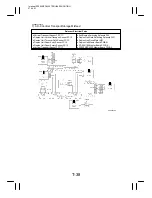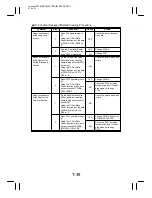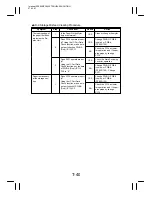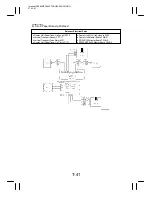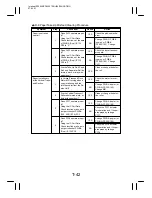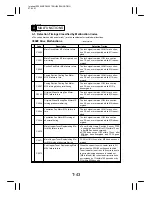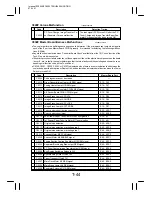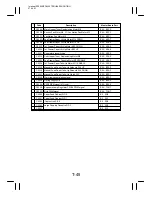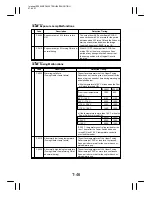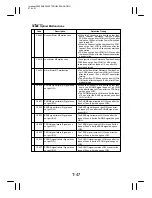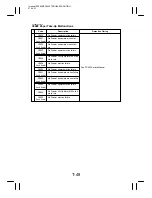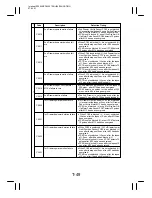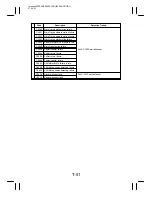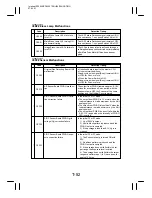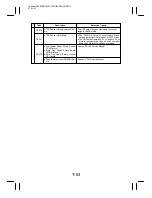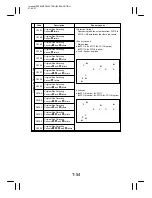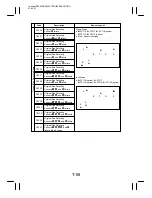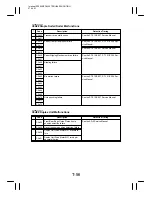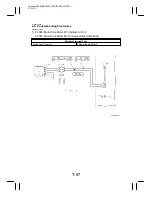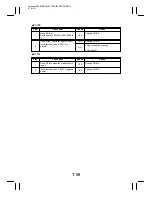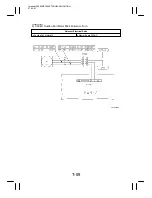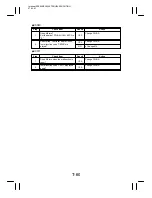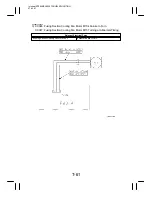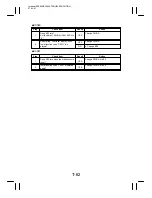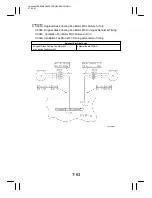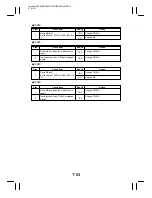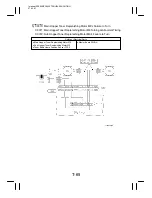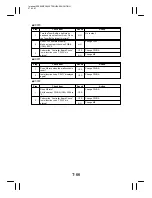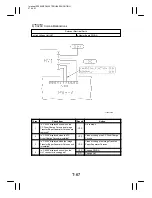
Interleaf EP5000/EP4000 TROUBLESHOOTING
97.04.01
T-52
1156SBT040108A
C0E## Erase Lamp Malfunctions
*
Code
Description
Detection Timing
C0E00
Main Erase Lamp LA2’s failure to
turn ON
The LA2 Failure Detection signal remains HIGH
for a continuous 1-sec. period while LA2 is ON.
C0E01
Main Erase Lamp LA2 turning ON
at abnormal timing
The LA2 Failure Detection signal remains LOW
for a continuous 1-sec. period while LA2 is OFF.
C0E20
Image Erase Lamp LA3’s failure to
turn ON
The LA3 gate array is faulty as found through a
self-diagnostic sequence carried out immediately
after Main Drive Motor M1 has been deener-
gized.
1156SBT040109A
C0F## Sensor Malfunctions
*
Code
Description
Detection Timing
*
C0F02
Original Size Detecting Board UN2
malfunction
D
Undefined data is input to the master CPU.
D
Under normal conditions:
A fixed-cycle pulse signal (Busy) remains HIGH
or LOW for 3 sec. or more.
D
When the Power Switch is ON:
A fixed-cycle pulse signal (Busy) remains HIGH
or LOW for 5 sec. or more.
C0F10
AE Sensor Board PWB-H malfunc-
tion
The output from PWB-H remains approx. 0.18V
or less for a continuous 2-sec. period, with the
Exposure Lamp OFF, the Scanner at the home
position, and the Original Cover lowered.
*
C0F20
AIDC Sensor Board PWB-G varia-
tion correction failure
In the initial F5 or FF mode:
D
The output from PWB-G is 1V or more when the
load resistance is made maximum by the 4-bit
analog switch.
D
The output from PWB-G is less than 1V when the
load resistance is made minimum by the 4-bit
analog switch.
D
The output from PWB-G does not fall within the
0.9V-1.1V range when the intensity of PWB-G
LED is varied.
*
C0F22
AIDC Sensor Board PWB-G grid
voltage (Vg) correction failure
In the initial F5 or FF mode:
1) Vg of 580V is output.
2) A solid black pattern is produced and the
PWB-G output is sampled.
3) If the average is less than 4.3V, Vg is in-
creased.
*
C0F23
AIDC Sensor Board PWB-G expo-
sure correction failure
In the initial F5 or FF mode:
1) The Exposure Lamp is turned ON with
58V.
2) A halftone pattern is produced and the
PWB-G output is sampled.
3) If the average does not fall within the tar-
get range, the exposure level is varied.
4) The average does not fall within the target
range even after steps 1) to 3) have been re-
peated 15 times.

